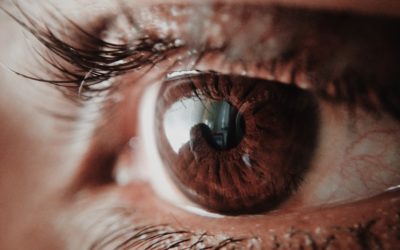Are you suffering from dry eyes?
The Keratograph: a map to discovering dry eye syndrome
When you want answers about your eye health, the Keratograph is one of our most useful diagnostic tools to pinpoint the cause(s) to your ailments by taking high quality images of your external eye structures with a full colour camera

Essentially, the Keratograph builds an in depth map of your eye
As a corneal topographer, the Keratograph takes advanced measurements of the corneal shape. The curvature of the cornea is measured across its entire surface and analysed by the computer.
Imaging the meibomian (oil) glands inside the lids is now possible as the Keratograph has an infrared camera. Before the Keratograph, we weren’t able to see these glands to assess how well they might be working.

Lately, we have been noticing dry eyes as a common theme during our appointments. With up to 85% of dry eye caused by meibomian gland dysfunction — a blockage of the meibomian glands which causes not enough oil to be secreted into the tears.
Meibomian gland dysfunction (MGD) signs and symptoms
Meibomian gland dysfunction symptoms (or MGD symptoms) are much like dry eye symptoms: itching, burning, red eyes, and blurred vision.
The only way to be sure if you are suffering from MGD, however, is to ask your optometrist.
We are able to test the quality, quantity and stability of your tears to determine if you do indeed have MGD.
Who is at risk to contract MGD?
Like dry eye, elderly people frequently experience MGD eye symptoms, but MGD can occur at any age.
If you wear makeup, you may be increasing your risk.
The way we apply and, more importantly, remove makeup can clog the meibomian glands. Make sure to thoroughly wash and clean all traces of eye makeup before going to sleep.
Ethnicity might also factor into the risk of getting MGD.
According to allaboutvision.com, Asians are the most affected by MGD with up to 69% of the Asian population in Thailand, Japan and China suffering from the dry eye syndrome.
Unsure if you have MGD? Check your eye map

Effective treatment (discussed further in our second article) and management of MGD relies on gathering as much information about the tear film and what factors are causing the deficiency.
Keratograph has programmes to evaluate the lipid layer, measure tear film breakup time, tear meniscus height, and image the meibomian glands.
Your eye map allows us to confirm the cause and extent of your condition. We can then recommend the best possible treatment options for you.
Without any treatment, the gland function is compromised. This means the gland content becomes stagnant and, when left untreated over time, permanent gland loss occurs.
If you would like to book a Keratograph meeting, or if you would like more information on MGD, please email Jenny at jenny@gp-optom.co.nz
Featured Posts
Top 5 Tips for Summer Eye Care
New Zealand summers are unbeatable – long days in the sun, more outdoor sports than you could shake a stick at, and beautiful beaches to enjoy with the family. It’s in our nature to get outdoors during this time of year, but too often we forget about our eyes and the...
Get familiar with Glaucoma
Learn about the leading cause of blindness Glaucoma is a silent warrior. It progresses painlessly, potentially leading to total blindness if left untreated. It’s estimated that around 91,000 New Zealanders suffer from Glaucoma, but...
Address
Cnr Great South Road & Rockfield Road, Greenlane 1051
Phone
09 525 1516
Hours
Mon to Fri: 9am – 5pm
Sat to Sun: Closed
Holidays: Closed



